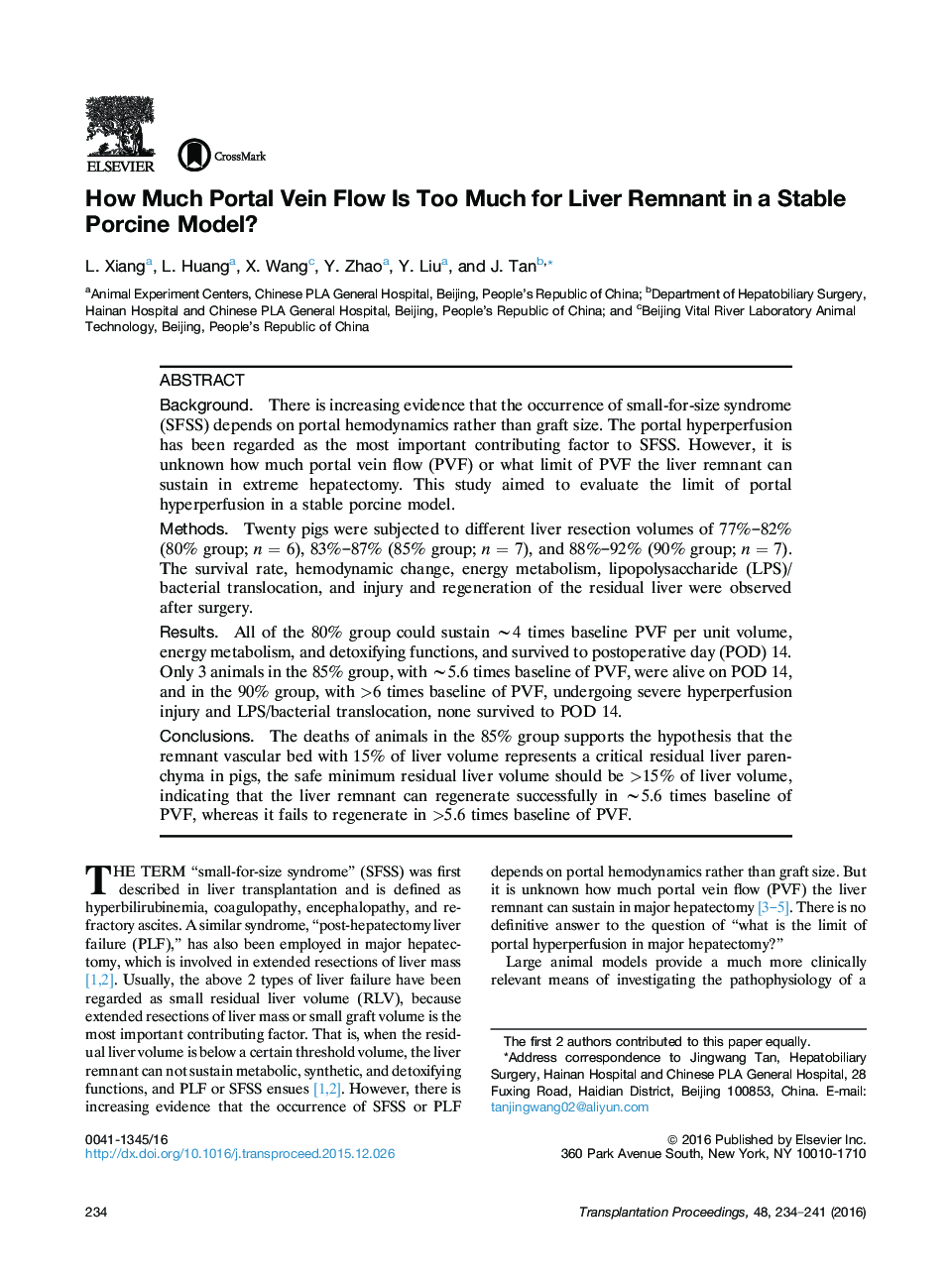| Article ID | Journal | Published Year | Pages | File Type |
|---|---|---|---|---|
| 6247074 | Transplantation Proceedings | 2016 | 8 Pages |
â¢The remnant with 15% of liver volume represents a critical residual liver parenchyma in pigs.â¢The liver remnant can regenerate successfully in â¼5.6 times baseline portal vein flow.â¢The liver remnant fail to regenerate in >5.6 times baseline portal vein flow.â¢Adequate portal vein flow is determinant of the successful regeneration of liver remnant.
BackgroundThere is increasing evidence that the occurrence of small-for-size syndrome (SFSS) depends on portal hemodynamics rather than graft size. The portal hyperperfusion has been regarded as the most important contributing factor to SFSS. However, it is unknown how much portal vein flow (PVF) or what limit of PVF the liver remnant can sustain in extreme hepatectomy. This study aimed to evaluate the limit of portal hyperperfusion in a stable porcine model.MethodsTwenty pigs were subjected to different liver resection volumes of 77%-82% (80% group; n = 6), 83%-87% (85% group; n = 7), and 88%-92% (90% group; n = 7). The survival rate, hemodynamic change, energy metabolism, lipopolysaccharide (LPS)/bacterial translocation, and injury and regeneration of the residual liver were observed after surgery.ResultsAll of the 80% group could sustain â¼4 times baseline PVF per unit volume, energy metabolism, and detoxifying functions, and survived to postoperative day (POD) 14. Only 3 animals in the 85% group, with â¼5.6 times baseline of PVF, were alive on POD 14, and in the 90% group, with >6 times baseline of PVF, undergoing severe hyperperfusion injury and LPS/bacterial translocation, none survived to POD 14.ConclusionsThe deaths of animals in the 85% group supports the hypothesis that the remnant vascular bed with 15% of liver volume represents a critical residual liver parenchyma in pigs, the safe minimum residual liver volume should be >15% of liver volume, indicating that the liver remnant can regenerate successfully in â¼5.6 times baseline of PVF, whereas it fails to regenerate in >5.6 times baseline of PVF.
